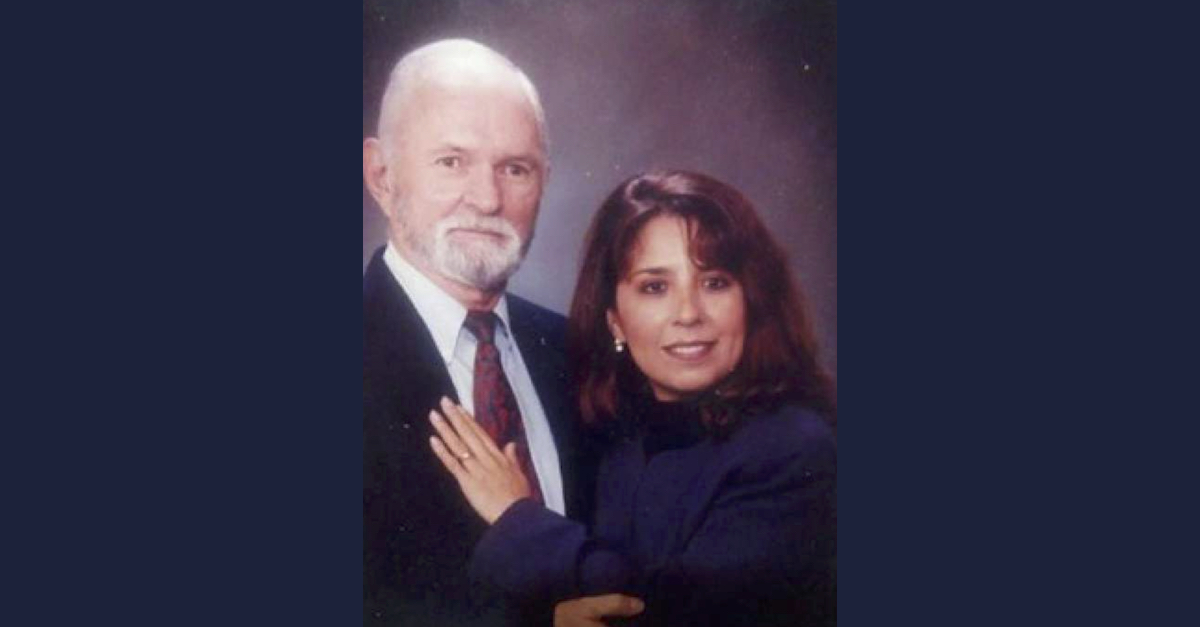
Edward Geddes (L) and Lina Reyes-Geddes (R)
It’s been more than 24 years since 38-year-old Lina Reyes-Geddes was found dead on the side of a Utah highway. Now, police have finally identified her husband as the killer. And he is long-deceased himself.
On April 20, 1998, a body was found on state Route 276 near Maidenwater Spring in Garfield County, Utah. Investigators discovered a precise and intricate method of disposal. The then-unknown woman was bound with rope, wrapped in plastic bags covered in duct tape, placed inside of a sleeping bag, and stuffed inside of a rolled up carpet.
The Garfield County Sheriff’s Office and the Utah State Bureau of Investigation shared investigatory duties. But the case went cold.
In late 2018, police in Youngstown, Ohio updated their missing persons registry with an image of Reyes-Geddes from Immigration and Customs Enforcement — the first photo of the woman the agency had ever possessed, according to Salt Lake City NBC affiliate KSL-TV. She disappeared in 1998 after leaving on a trip from Ohio to Mexico by way of Dallas-Fort Worth International Airport, the story long went. It was unknown for years, however, if she ever made it to Texas.
Meanwhile, Utah investigators were publicly getting the case wrong in an effort to link the death of the woman known as the “Maidenwater victim” to convicted serial killer Scott “Hannibal” Kimball.
“At this point, there are a lot of similarities between this victim and his other victims, in the cause of death, things that have occurred to their body after death, the way they were packaged, the way they were hidden and discarded,” Utah State Bureau of Investigation agent Brian Davis said during a press conference that was held shortly after an episode of Dateline ran that focused on Kimball’s reign of terror.
Less than a month later, the one agency’s belated (but publicized) efforts combined with the second agency’s highly-publicized mistake about Kimball — and a true crime aficionado in California finally linked the two cases together. That citizen contacted Davis, sent along a picture, and suggested the police look into a possible connection.
After conferring with police in Ohio, investigators located a relative of the long-missing woman. Two family members traveled to the U.S. Consulate in Monterrey, Mexico to provide DNA samples. The results came back and Reyes-Geddes was no longer a woman solely identified by the place where her body had been dumped.
With progress on the case came another public misstep.
The Garfield County Sheriff’s Office quickly posted a Facebook update saying “the suspect of this murder committed suicide in Nevada in the early 2000s,” according to a November 2018 report by KSL-TV.
Davis rejected the local law enforcement take.
“From our standpoint . . . we don’t consider him a suspect at this time,” he said. “There’s a misunderstanding there.”
Edward Geddes eventually did become a suspect. But his body was cremated after he killed himself in Nevada in 2001, making identification time-consuming. Law enforcement requested DNA from his surviving blood relatives, and two of them agreed. A search warrant was used to get DNA from a third family member, KSL-TV reports.
The rope found on Reyes-Geddes’ body contained DNA that did not belong to her. That DNA was pulled using a special sort of wet suction device that extracts genetic material from items that are relatively porous. The DNA found on the rope was a familial match for each of the husband’s three relatives.
Another roadblock appeared, however, as the DNA of an additional man was found on the rope. The DNA was eventually unmixed, the TV station reports, and the second man’s DNA showed another surprise: a link to a murder out of Montana. That wrinkle was pressed down after police determined the second man was a knot expert who had accidentally contaminated the evidence.
Only the husband remained.
“To have this answer finally after 24 years is incredible,” David told KSL-TV. “And I know it’s not the answer that (her sister) would have wanted when she found her sister . . . but they had suspected. In fact, quite frankly, their family thought that Edward had done something to her. They just hadn’t proved it . . . . That was always their hunch.”
[image via Utah State Bureau of Investigation]